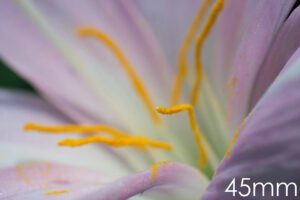البعد البؤري في تقنية الماكرو للعدسة العكسية
Focal Length in Reverse Lens Macro Technique
Macro, Landscapes and Seascapes are my favorite genres in photography, but as I don’t travel much, I tend to shoot more macro in my backyard. Last time, I wrote an article on high magnification macro photography on a budget, where I pointed out the fact that I use the reverse lens technique in order to achieve high magnification macro shots. The technique really works great if you give it a try and the good news is that you do not need expensive gear to yield beautiful macro shots – a cheap kit lens will do wonders!

الماكرو والمناظر الطبيعية والمناظر البحرية هي الأنواع المفضلة لدي في التصوير الفوتوغرافي، ولكن نظرًا لأنني لا أسافر كثيرًا، فإنني أميل إلى تصوير المزيد من الماكرو في الفناء الخلفي لمنزلي. في المرة الأخيرة، كتبت مقالًا عن التصوير الفوتوغرافي الماكرو عالي التكبير بميزانية محدودة، حيث أشرت إلى حقيقة أنني أستخدم تقنية العدسة العكسية من أجل الحصول على لقطات ماكرو عالية التكبير. تعمل هذه التقنية بشكل رائع حقًا إذا قمت بتجربتها والخبر السار هو أنك لا تحتاج إلى معدات باهظة الثمن للحصول على لقطات ماكرو جميلة – فالعدسة الرخيصة ستفعل المعجزات!
Focal Length in Reverse Lens Macro Technique
Macro, Landscapes and Seascapes are my favorite genres in photography, but as I don’t travel much, I tend to shoot more macro in my backyard. Last time, I wrote an article on high magnification macro photography on a budget, where I pointed out the fact that I use the reverse lens technique in order to achieve high magnification macro shots. The technique really works great if you give it a try and the good news is that you do not need expensive gear to yield beautiful macro shots – a cheap kit lens will do wonders!

الماكرو والمناظر الطبيعية والمناظر البحرية هي الأنواع المفضلة لدي في التصوير الفوتوغرافي، ولكن نظرًا لأنني لا أسافر كثيرًا، فإنني أميل إلى تصوير المزيد من الماكرو في الفناء الخلفي لمنزلي. في المرة الأخيرة، كتبت مقالًا عن التصوير الفوتوغرافي الماكرو عالي التكبير بميزانية محدودة، حيث أشرت إلى حقيقة أنني أستخدم تقنية العدسة العكسية من أجل الحصول على لقطات ماكرو عالية التكبير. تعمل هذه التقنية بشكل رائع حقًا إذا قمت بتجربتها والخبر السار هو أنك لا تحتاج إلى معدات باهظة الثمن للحصول على لقطات ماكرو جميلة – فالعدسة الرخيصة ستفعل المعجزات!








تعليق